Townsend Courtney M.Jr., Evers B. Mark. Atlas of General Surgical Techniques: Expert Consult
Подождите немного. Документ загружается.


CHAPTER 74 • Inguinal Herniorrhaphy (McVay; Cooper’s Ligament Repair) 819
3. CLOSING
◆ Close skin with staples or 3-0 or 4-0 permanent monofi lament suture (Prolene).
STEP 4: POSTOPERATIVE CARE
◆ Instruct the patient to refrain from heavy lifting or aggressive activity for 3 to 4 weeks.
STEP 5: PEARLS AND PITFALLS
◆ For large indirect hernia sacs, simply incising along the anterior surface precludes the need
for removal of the indirect hernia sac, thereby greatly reducing the incidence of subse-
quent hydrocele formation yet minimizing any bleeding associated with complete removal
of the sac.
◆ Place sutures at unequal depth and distance when approximating the transversalis fascia or
external oblique aponeurosis to reduce any sheer effect and thereby strengthen the closure.
SELECTED REFERENCE
1. Zollinger RM Jr, Zollinger RM: Atlas of Surgical Operations, 5th ed. New York, Macmillan, 1983, p 402.

820
STEP 1: SURGICAL ANATOMY
◆ A thorough knowledge and understanding of the anatomy of the inguinal canal and pre-
peritoneal space is critical to success in the tissue repair of the inguinal hernia.
◆ The site of incision and surface landmarks important to consider are demonstrated in
Figure 75-1.
CHAPTER
75
Inguinal Herniorrhaphy—
Shouldice
Michael D. Trahan
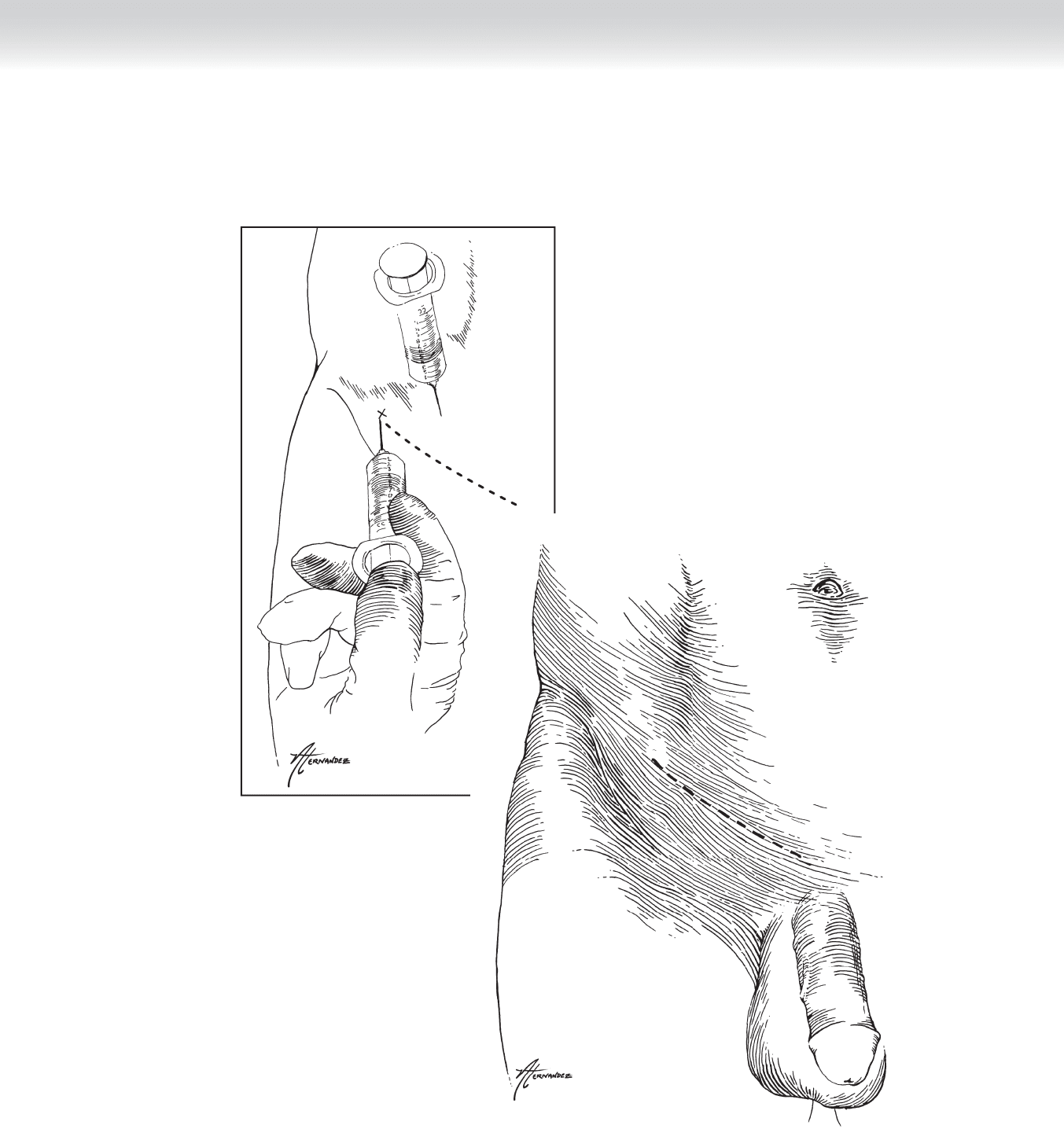
CHAPTER 75 • Inguinal Herniorrhaphy—Shouldice 821
FIGURE 75 –1

822 Section XI • Hernias
◆ The important structures of the male inguinal canal are illustrated in Figure 75-2.
◆ It is important to note that these structures may be signifi cantly distorted by large or long-
standing hernias, or both.
STEP 2: PREOPERATIVE CONSIDERATIONS
◆ Repair of an inguinal hernia should be considered for the patient with symptoms from
the hernia that interfere with daily activities and for those hernias at risk for incarceration
or strangulation.
◆ An effort should be made to diagnose and treat conditions that result in Valsalva, such as
constipation, urinary straining, and chronic cough, before hernia repair.
◆ The Shouldice hernia repair has the lowest recurrence risk of all of the tissue repairs.
ANESTHESIA
◆ The choice of anesthesia should be tailored to the individual patient after evaluation by the
anesthesiologist.
◆ This repair can be performed with general, regional (spinal), or local anesthesia.
◆ Five to 10 mL of a long-acting local anesthetic, such as bupivacaine, should be injected just
medial to the anterior superior iliac spine and deep to the external oblique muscle.
◆ Ten milliliters of the local anesthetic is injected subcutaneously at the site of the incision.
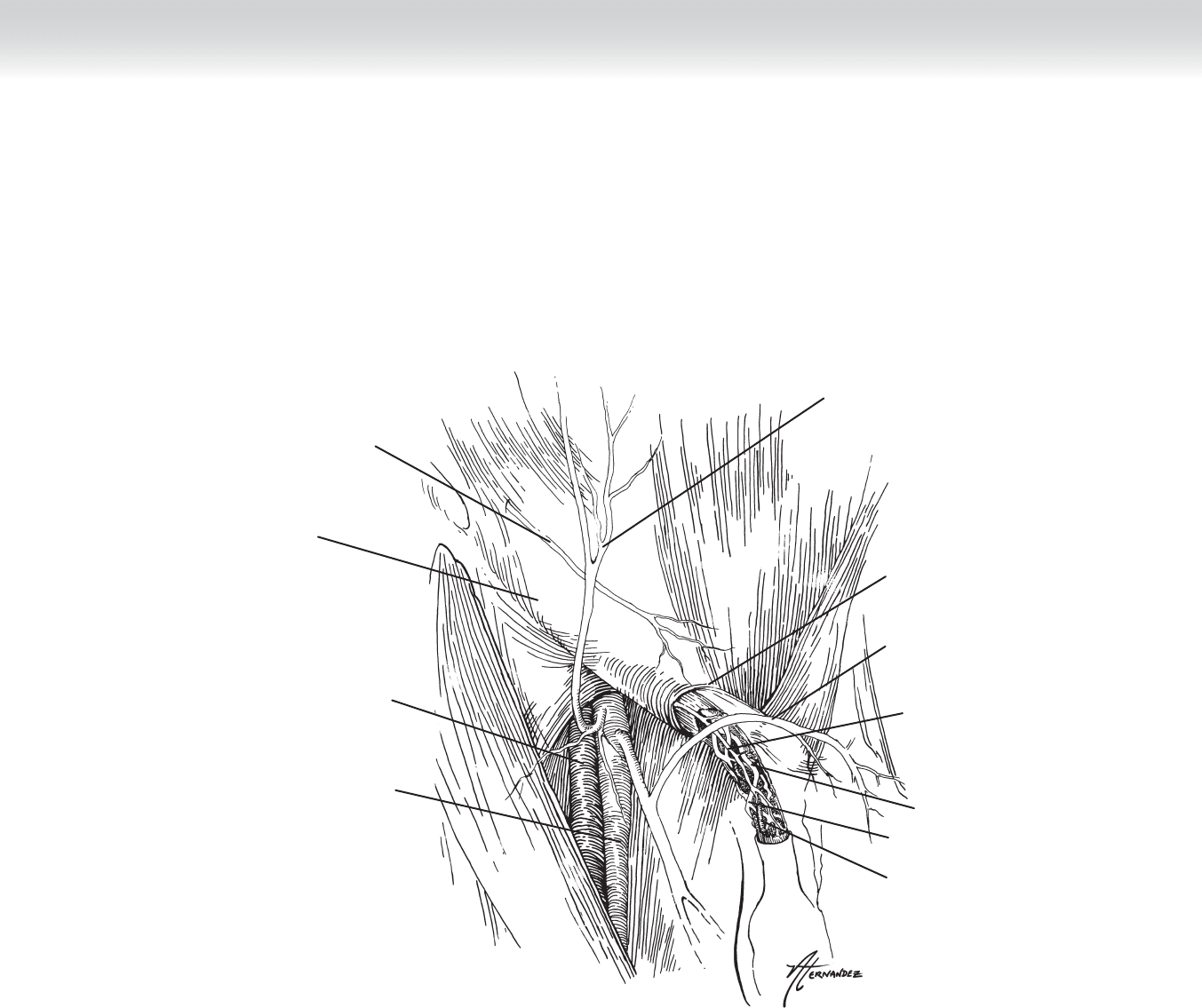
CHAPTER 75 • Inguinal Herniorrhaphy—Shouldice 823
Inferior epigastric vein
Iliohypogastric nerve
Inguinal (Poupart’s)
ligament
Femoral artery
Femoral vein
Pampiniform plexus
Testicular artery
Vas deferens
Ilioinguinal nerve
External pudendal vein
External inguinal ring
FIGURE 75 –2
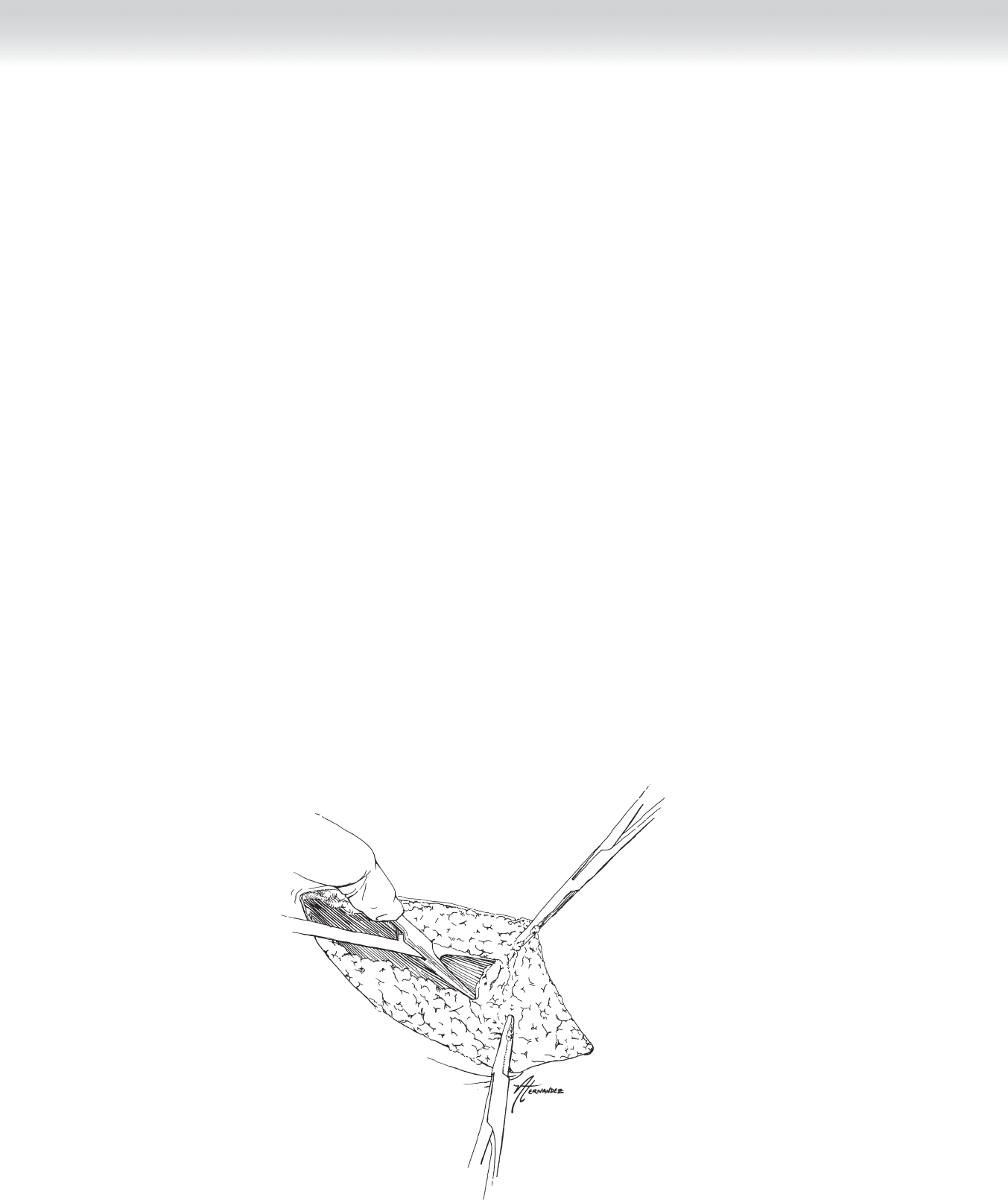
824 Section XI • Hernias
STEP 3: OPERATIVE STEPS
1. INCISION
◆ Shaving should be avoided. If hair removal is necessary, it should be removed with an
electric clipper.
◆ A linear incision is made over the external inguinal ring parallel to the course of the
inguinal ligament.
◆ The subcutaneous fat and Scarpa’s fascia are divided sharply to expose the external abdominal
oblique aponeurosis and spermatic cord (Figure 75-3).
FIGURE 75 –3
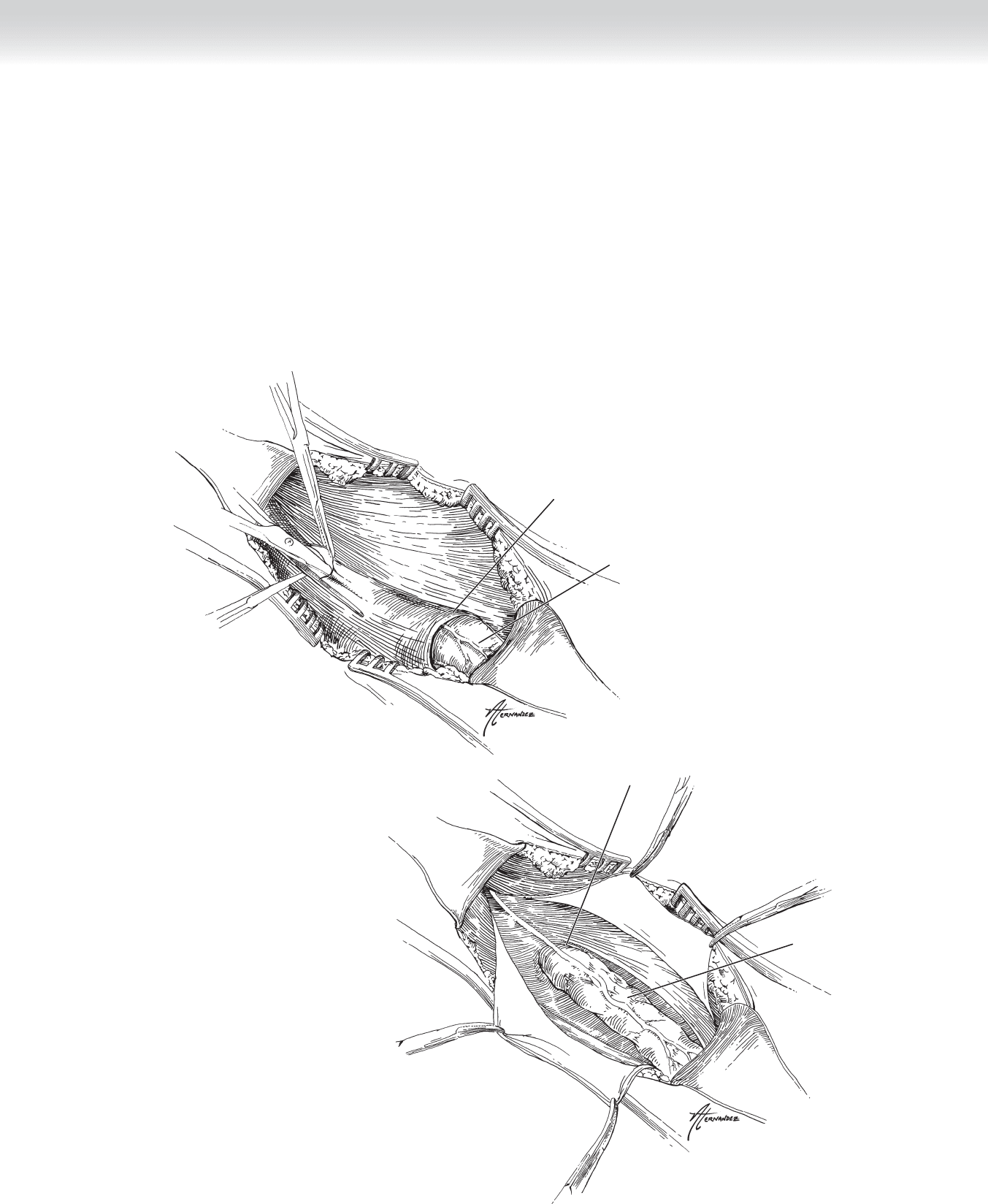
CHAPTER 75 • Inguinal Herniorrhaphy—Shouldice 825
2. DISSECTION
◆ The external oblique aponeurosis is incised obliquely along the lines of its fi bers, down
through the external inguinal ring (Figure 75-4).
◆ The plane between the external and internal oblique muscle layers should be sharply dis-
sected to the rectus sheath medially and the shelving edge of the inguinal ligament inferior
laterally (Figure 75-5).
External ring
Spermatic cord
FIGURE 75 –4
Spermatic cord
Internal ring
FIGURE 75 –5

826 Section XI • Hernias
◆ The spermatic cord is mobilized from the fl oor of the inguinal canal and encircled with a
Penrose drain (Figure 75-6).
◆ The cremaster muscle is incised longitudinally to reveal the hernia sac and cord structures
(Figure 75-7).
Spermatic cord
FIGURE 75 –6
Transversalis fascia
FIGURE 75 –7
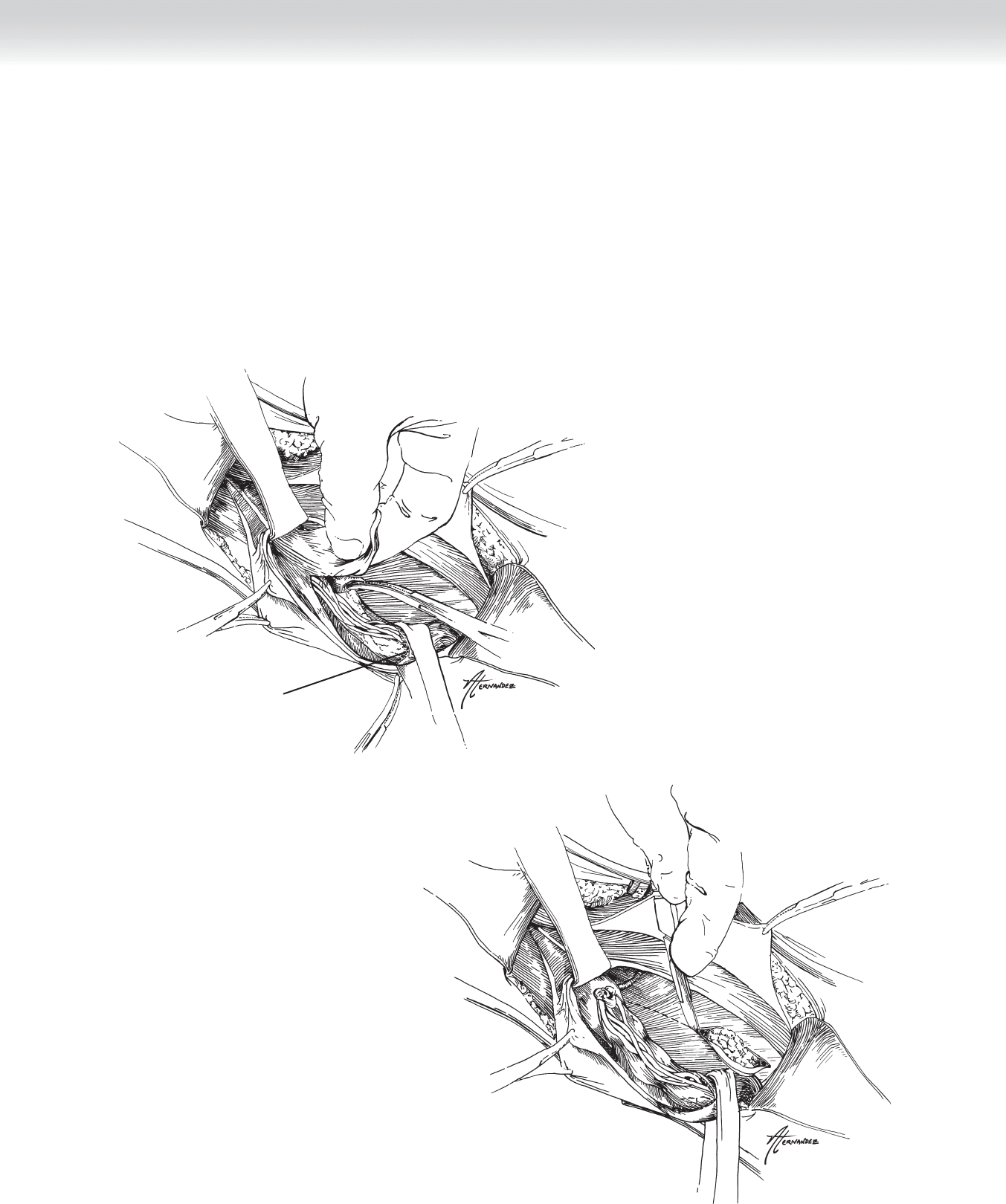
CHAPTER 75 • Inguinal Herniorrhaphy—Shouldice 827
◆ Dissection of the indirect sac and any cord lipomas from the cord structures should be
complete up through the internal inguinal ring. Large sacs may be excised, whereas smaller
sacs may be reduced through the ring (Figure 75-8).
◆ The fl oor of the inguinal canal (transversalis fascia) is incised beginning near the pubic tuber-
cle and proceeding laterally, with care taken to avoid the epigastric vessels as the internal ring
is approached. The preperitoneal fat should protrude through the incision to ensure adequate
opening of this layer (Figure 75-9).
Cut edge of
cremaster fibers
FIGURE 75 –8
FIGURE 75 –9

828 Section XI • Hernias
◆ The excess transversalis fascia of a large direct hernia may need to be trimmed.
◆ The preperitoneal fat should be swept off of the transversalis fascia to allow adequate mobi-
lization of these fl aps to complete the operation.
◆ Two nonabsorbable sutures such as 2-0 polypropylene are then used to perform the run-
ning four-layer closure.
◆ The fi rst suture is started with a healthy bite of the pubic tubercle securing the lower layer
of the transversalis fascia to the undersurface of the upper fl ap incorporating a bite of the
rectus sheath. Small, closely spaced bites are used to close this layer progressing to the
internal ring (Figure 75-10).
◆ Without tying this suture, the second layer is started by approximating the upper fl ap of the
transversalis to the shelving edge of the inguinal ligament, with care taken to not strangu-
late the cord. The second layer of the fi rst suture ends at the pubic bone, where the suture
is tied (Figure 75-11).
